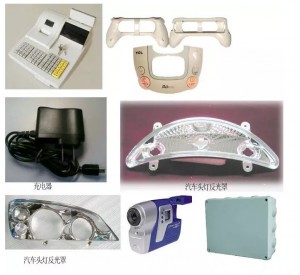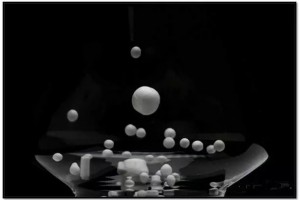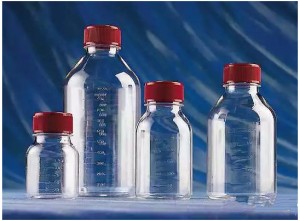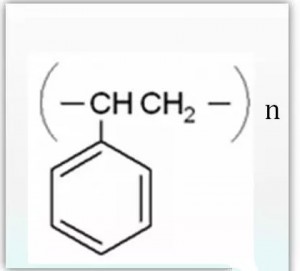Polystyrene (PS), it is featured by resistance, transparency, insulation, lust (easy to stain); low moisture absorption, the price is cheap. Therefore, it is often sold in electronics, automotive, packaging, construction, instrumentation, home appliances, toys and other daily necessities in the industry.
Cheap polystyrene has lots of shortcomings, such as brittleness, poor resistance to environmental stress, poor solvent resistance. Thus, modifying is necessary to treat these illnesses. Three of the more common methods are: modification, copolymerization and modification of inorganic nanoparticles.
A blend of modified
Blending: is to put two or more polymeric materials, inorganic materials and additives, through mechanical agitation, and finally obtain uniform mechanical, thermal, optical materials with improved performance.
Blend Features: Blending methods small investment, short production cycle, and thus become the PS-modified hot, is not only an important means of polymer-modified, is also an important way to the development of new materials.
PS / PE
Polyethylene (PE) has excellent flexibility and impact resistance, and thus help to improve the toughness of PS. But PS and PE are two incompatible polymers, when modification, must be added to a suitable compatibilizer. PS and PE blended with the two means can be implemented, i.e., non-reactive blending, and reactive blending.
In the study of reactive blending, the enhanced PS (RPS), hydroxylated PE (CPE), PE and PS was simultaneously fed into a twin-screw extruder to obtain extruded melt blending Blending PS. PE does not affect the molecular weight increases the tensile strength of the blend, but can also improve the impact strength of the blend.

PS / PP
The tensile strength of polypropylene (PP) is higher than the PS surface hardness, heat resistance is also good, and thus it can improve the thermal performance of PS.
However, PP and PS is incompatible, it must be added compatibilizer. Conventional surface treated silicon filled PS / PP systems to increase the adhesion between the polymer interface, increasing the tensile strength of the PS / PP system. Maleic anhydride functionalized polypropylene (RPS-MPP) for PS / PP also has better reaction compatibility effect.
PS / PC
Polycarbonate (PC) has good performance, good creep resistance, visible light transmittance is up to 90%, refractive index is similar to PS, and can be blended with the PS, PS thermal stability, strength, and toughness have improved.
Partial compatible PS / PC by external force, because of the continuous phase interfacial stress distribution, so the impact and tensile forces to produce the blend crazing and shear zones, thereby improving the mechanical PS / PC blends performance.

Second, copolymerization
Copolymer is one of the important methods of PS modified. A styrene monomer and a second monomer flexible method introduced the group to maintain the original PS excellent performance, but also improve the toughness and the purpose of improving processing performance. There are block copolymers and graft copolymers.
1, a block copolymer
PS blend with other polyolefins compatibility is low, but the two copolymers can be obtained the product of rigidity and toughness. The second monomer is generally α- olefins. Catalytic styrene monomer and a second metallocene catalyst, while maintaining the rigidity of the PS, but also enhance its flexibility.
2, graft copolymerization
Metallocene catalyst synthesized by graft copolymerization of styrene copolymer and its boron derivative, and the product of a group of boron oxide and hydroxide were.
By atom transfer radical polymerization, we synthesized a series of PS graft copolymer, polystyrene to achieve a function, and can be controlled by the extent of the amount of bromide is added to control the length of the graft monomer density and graft chain.
Transfer situ chain reaction in a suitable reaction conditions and catalyst system, synthesized terminal polar group-containing graft copolymer of PS, can achieve PS functionalization.

Third, the inorganic nanoparticles modified
Because of the unique surface effect, volume effect, quantum size effect and other characteristics, performance of Inorganic nanoparticles and general powder and bulk materials have significant differences. Inorganic nanomaterials and PS complex under certain conditions, can greatly improve the strength of the polymer material, toughness, heat resistance, abrasion properties. Preparation methods of PS / inorganic nanoparticle composite is more, it is the following.
1, melt blending method
The modified nanoparticles added to the molten resin, after forming the blend that was blended product. Because nanoparticles are prone to agglomeration of particles it is difficult to uniformly disperse in the system, so the key is in the process before blending nanoparticles to a surface treatment.
Prepared by mechanical blending PS / nanoparticle composites, can significantly improve the tensile strength and notched impact strength, increase heat flow.
2, solution blending method
Solution mixing: the matrix resin is dissolved in an appropriate solvent, adding nano particles, nano-particles dispersed sufficiently stirred after mixing, the solvent was removed to give the product blend. Multi-walled carbon nanotubes MWNTs acid oxidation infiltration in tetrahydrofuran, and then the PS dissolved in the solution, ultrasonic treatment 3 h, to obtain PS / multi-walled carbon nanotube composite conductive material, the blend method can improve material the storage modulus and electrical conductivity.
3, in situ polymerization
Situ polymerization: refers to nanoparticles through surface treatment added to the monomer mix well, then initiated polymerization of monomers under appropriate conditions, to obtain a PS / nanocomposites. Situ prepared PS / vermiculite nanocomposites, the relative PS, the decomposition temperature of the composite product has been significantly improved.
There are many ways for PS modification, but the overall performance, modified mechanism modified products are to be further improved. Because the impact resistance of the modified product, heat resistance, chemical resistance and processing properties also need to meet the higher requirements, in order to achieve PS modified products are more widely used.
